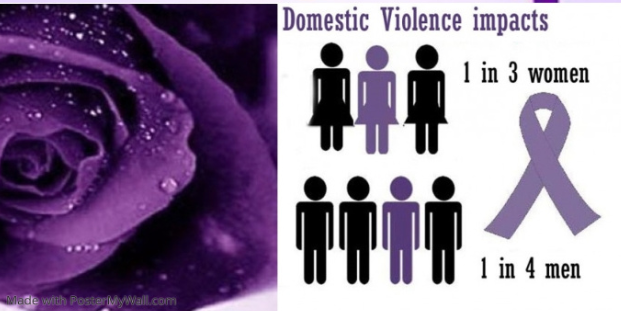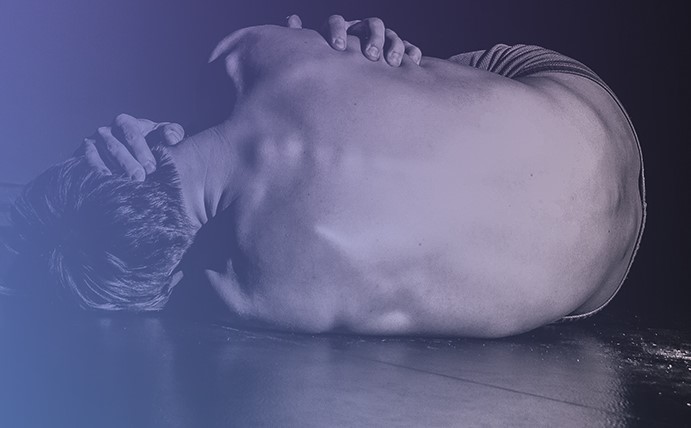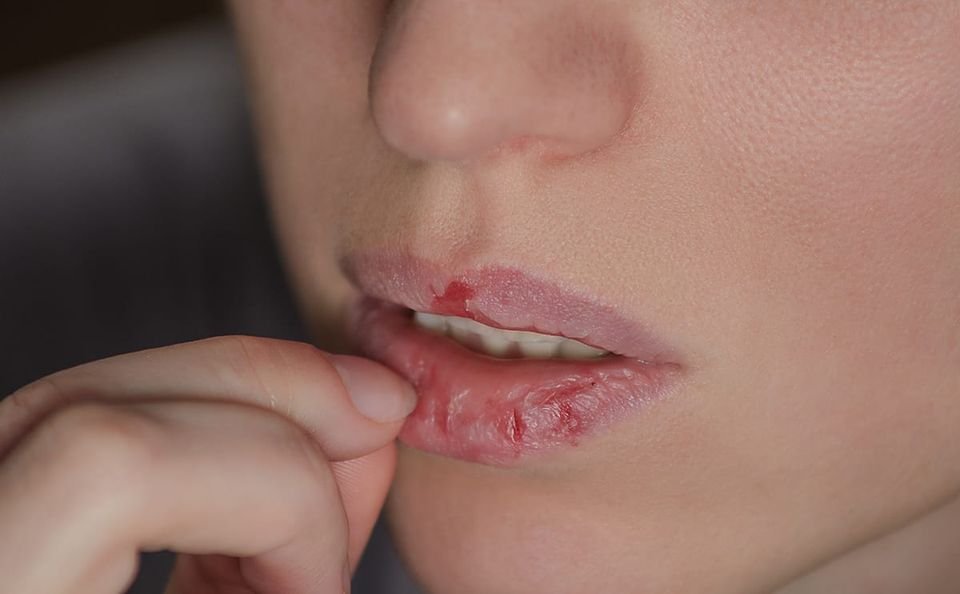Massage for Domestic Abuse and PTSD
POST TRAUMATIC STRESS DISORDER
In a national survey of over 8000 subjects, Kessler et al, found that:-
• 6.5 % of the subjects had a lifetime prevalence of PTSD
• Another 2.8 % had a 30-day prevalence of PTSD
• Women were 50% more likely to develop PTSD
• those with PTSD were at increased risk of developing other psychiatric disorders, eg. anxiety and mood disorders

WHY DOES PTSD OCCUR?
During a traumatic event, the "fight or flight" response occurs as a self preservation mechanism. Adrenaline is released to allow someone to physically fight or run from the danger. However, if the after-effects aren’t dealt with, the initial trauma can have a lasting effect, on mind and body. The PTSD response occurs when we attempt to override this "fight or flight" response, either because we were trained to, or because we have no other option. If the fight or flight response isn’t completed, then the surge of adrenaline has no exit route, because you didn't physically run or use the energy in any other way. This leaves the body feeling in shock. In the following weeks, even years, slight bursts of adrenaline can occur when similar aspects of the initial experience take place. Your rational mind will continue to want to ignore it, but the body is still trying to resolve the effects of the experience.
PTSD symptoms include:-
• sleep disturbances
• flash-backs
• a state of near-constant stress
• anger • depression
• anxiety
• irritability
• chronic pain
• chronic fatigue
• suicide
• self-harming- by feeling pain on the outside of our bodies we can temporarily trick the brain into re-directing us away from the traumatic memory
HOW DOES MASSAGE THERAPY HELP WITH PTSD?
Depersonalization and dissociation are two coping mechanisms provided by the brain during abuse. Since our memories are stored in our tissues, abuse can cause us to retreat from physical touch by another person, even when coming from someone who cares for us. These coping mechanisms will continue until we heal the physical tissues as well as the mind. The brain is a sensory organ and can’t distinguish between a memory and an actual traumatic event, only what we tell it, so if we hear or feel something that recalls the trauma, the brain senses danger, placing us back into the event that caused the damage in the first place.
Massage therapy can:-
• heal the areas where the memories are held
• massage is shown to bring about positive biochemical changes such as reduced cortisol and increased serotonin and dopamine, reducing anxiety and increasing relaxation
• massage addresses muscles, tendons, and soft tissues to loosen up tightness, improving flexibility, which may have been affected by long term stress
• positive human touch stimulates hormones in the body, such as oxytocin, which initiate the relaxation response, and long-held stress patterns can begin to dissolve
MASSAGE FOR VICTIMS OF DOMESTIC ABUSE

Having suffered domestic abuse myself and consequently dealing with PTSD for many years, I have recently come to see just how valuable massage can be from the clients points of view, being fortunate enough to have had a work colleague help me through my worst PTSD trigger. • 1 in 4 women experience domestic violence in their life
• approximately every 24 seconds a partner will be abused
• 85% of victims are women
• only about 25% of physical assaults, 20% of rapes and 50% of stalkings are officially reported to the police
• less than 20% of domestic violence victims seek medical treatment following an injury
Shock associated with abuse:-
When we suffer abuse we are forced to disconnect from our bodies, causing us to freeze or panic, because our nervous system is unable to cope physically, emotionally or mentally. The extent of vulnerability is held in the cells of our bodies, pain burrowing inward, unnoticed until it emerges as mental, emotional or physical symptoms:-
• chronic fatigue
• insomnia
• chronic joint/muscle pain
• persistent weakened immune response
• autoimmune diseases can be related to shock
• structural rigidity/hypotonicity
• resistance to healing
Shock can:-
• take away our neurological capacity to act
• cause us to behave destructively
• create obsessive patterns and addictive tendencies that reduce energy levels
• cause dysfunctional sexual patterns and failed relationship
• cause criminal/violent behaviour
Response to shock and trauma:-
• hyper-arousal due to sympathetic nervous system dominance
• fixation due to parasympathetic nervous system dominance
Shock is demonstrated by immediate, and often chaotic, responses to threat, because after therapy for the initial trauma, the shock may still be experienced, revealing itself through somatic issues which are often unresolved. The reversal of these dominant responses is essential to resolve shock and allow a healthy response to any threats. Eliminating shock could be explained as clearing out the cobwebs from the nervous system, tissues, muscles, bones and joints, which allows us to enjoy not only physical movement, but also productive relationships and freedom to express ourselves. Intervention through even minimal touch, when combined with respect and a safe environment, can calm the nervous system and allow transformation at a cellular level, bringing about resources such as positive human contact, which were previously unavailable.

HOW DOES MASSAGE HELP SURVIVORS OF DOMESTIC VIOLENCE AND TRAUMA?
• The massage therapist can be a confidant – a relaxed client will often start talking about personal things that may not be discussed with anyone else. Bruising which may otherwise be covered by clothing, can be seen, potentially bringing about a conversation. It can be a passive form of asking for help, of showing someone they trust the bruises on their soul and body • For victims of domestic violence, massage can offer a time of refuge and healing with someone they trust
• Massage therapy can be used in a recovery program, reducing stress and anxiety and encouraging relaxation, which allows an abused client to reconnect with their body in a positive and healthy way, and to rebuild trust in a safe place with a compassionate and skilled therapist. This can allowing them to function rather than dissociating, which is used as a defense mechanism to protect themselves from fully experiencing the abuse.
• Human touch can bring out hidden trauma, demonstrated as changes in skin tone, muscle tension, voice intonation, gestures and quality of contact.
• Even after victims of domestic violence have escaped, they bear physical and emotional scars, having been repeatedly made to feel not good enough, which impact on their health. Massage can be rejuvenating, allowing the client to heal on the inside and out, putting their struggles aside for an hour and recognising their value.
• The body remembers trauma, and massage can relieve stored trauma and tension. Many victims of trauma are often not present in their bodies, and massage can ground people and create a feeling of safety again
• Being believed and respected is transformational and can be more of a potent intervention than a specific treatment, so this can be incorporated into the intention of the therapist.
• Massage can honour the client for herself, without being objectified or judged.
• Massage re-educates the nervous system in order to heal and allow the client to feel safe in their own skin. Talking therapies do not address the physical scars.

PRECAUTIONS FOR THE THERAPIST:-
• Be observant – ask client about unexplainable bruising or cuts
• During a massage a client may have flashbacks of past trauma or abuse
• Listen to your client- both verbal and non verbal communication and don’t be afraid to ask questions, particularly about client admissions of chronic fatigue, joint or muscle pain, , nightmares or a weakened immune system.
• Be supportive, empathetic and compassionate - victims of abuse or trauma are often unable to adequately communicate their needs, and may have problems defining boundaries, so it is up to you as the professional to help with this. Take care to follow proper procedures eg.draping and where you place your hands and body during a massage session.
• if you suspect or know that a client has been abused, avoid deep tissue techniques as they may be perceived as unsafe or encourage flashbacks to the abuse.
• Shock and trauma are locked in the body and touch will activate it. If there is resistance at any point, either physically or emotionally, don’t push
THE RELATIONSHIP BETWEEN CHRONIC PAIN & PTSD

The impact of living with chronic pain can be life changing, bringing an inability to work or do daily activities, but chronic pain also impacts upon mental health, with sufferers feeling unable to cope and feeling like they are being judged.
Research has shown pain to be one of the most common physical symptoms of PTSD, with an estimated 20-30% having frequent pain and a high incidence of pain related disability. Chronic pain, when experienced alongside PTSD, has been shown to be more severe and coincide with depression and a higher rate of substance abuse.
WHY DOES PTSD CAUSE PHYSICAL PAIN?
• hyperarousal symptoms of PTSD can often induce tense muscle pain which may become chronic. Anxiety and hypervigilance generally increases the tension on muscles and joints, and this can even occur while the person is asleep.
• Long term increased cortisol levels from PTSD, due to being stuck in the fight or flight response, can deplete the adrenal glands, which then increases the level of prolactin, causing a rise in pain sensitivity.
• many PTSD sufferers demonstrate a reduced ability to go outside or exercise, which may lead to muscle pains, potentially becoming a chronic issue
• traumatic events can cause serious physical injuries which lead to chronic pain
TREATING PTSD AND CHRONIC PAIN
Accessing treatment for PTSD or chronic pain alone can impact on your self esteem, but both together can feel completely overwhelming. Treating only one issue, however, is likely to be counterproductive, so treating them as a mutually-related problem is advised, and this is another reason why massage can be so effective in these situations, because it treats both the psychological and physiological aspects of PTSD and chronic pain. EMDR and CBT certainly have a place in the treatment of PTSD, but they won’t address the physiological problems.
THE RELATIONSHIP BETWEEN PTSD & SKIN CONDITIONS

We often find that our skin will flare up during times of stress, becoming very dry, or prone to scarring, acne or rosacea. This can really damage your self-confidence.
Research now shows that:-
• PTSD can cause skin issues, with emotional stress being one of the most common triggers for rosacea
• Manifestations of these mind-body connections include:-
numbness and cutaneous self-injury
skin-picking and eating disorders
direct physical skin injury and stress-reactive inflammatory conditions eg.psoriasis
High levels of inflammation and impaired skin functioning are reported in cases of sustained psychological stress and sleep deprivation, and PTSD, therefore may be a contributing factor in chronic skin conditions that are resistant to treatment.
Research also now shows a link between alexithymia (a personality trait characterised by poor expression or understanding of emotions) and acne. Inability to communicate our emotions can lead to various illnesses, such as lower back pain, asthma, allergies, irritable bowel syndrome and fibromyalgia. Acne is a skin condition now added to the list.
Psychological stress is linked with physiological problems such as:-
• nerve hyperstimulation - release of corticotrophin, a stimulating hormone, by the brain and the skin which then causes release of stress hormones from the adrenal glands. This causes skin cells containing histamine, an inflammatory chemical, to break open, spreading the histamine to other cells, causing redness and itching
• tachycardia
• reduced circulation, which deprives the tissues of oxygen
• increased electrical conduction of the skin, causing more intense sensations
When in a constant fight-or-flight state, as in PTSD, chronic skin conditions can develop due to reduced ability of the skin to repair and regenerate, bringing an increased risk of scarring. This makes sense, given that the body’s stress response causes dry skin through water being drawn towards the inner skin layers during times of stress, to maintain hydration.
Early intervention is always important in overcoming PTSD, and consequently overcoming associated symptoms, including skin conditions, which if untreated may encourage social anxiety or depression.
While trauma focused therapies such as Eye Movement Desensitisation Reprocessing (EMDR) and cognitive behavioural therapy (CBT) can be successful, for some the repeated exposure to the trauma may prove to be too much, hence why I previously posted about the benefits of massage for PTSD on a physiological level, as opposed to simply a psychological one.
